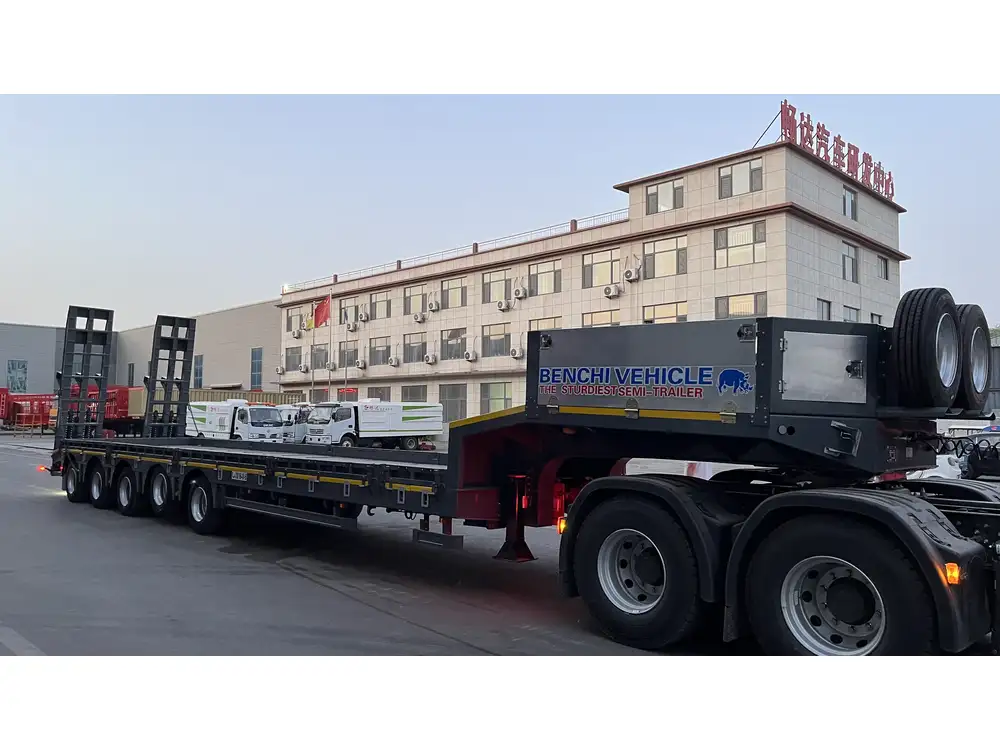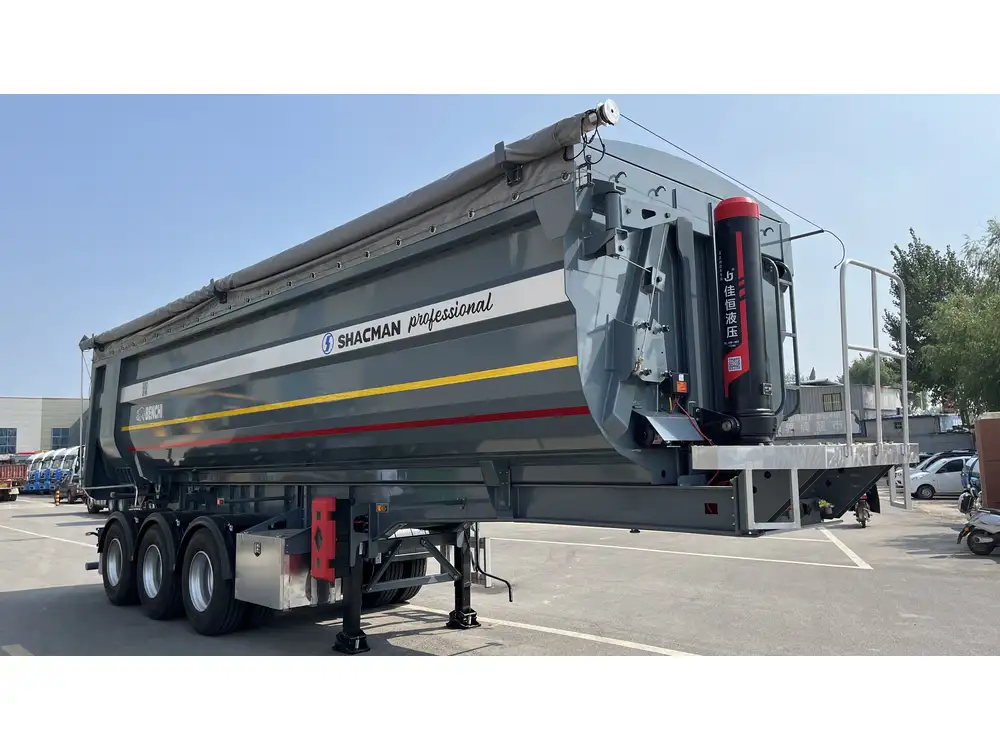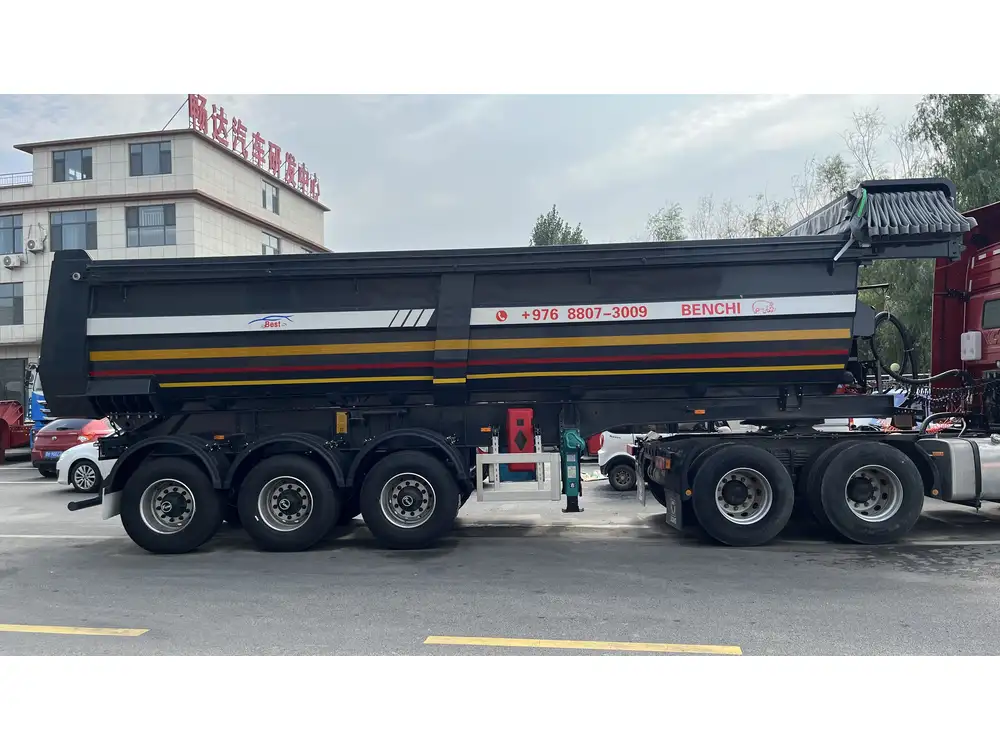Weight distribution in a semi-trailer is a critical aspect that directly influences safety, performance, and regulatory compliance. Improperly distributed weight can lead to numerous complications, including increased tire wear, diminished braking efficiency, and, most importantly, safety hazards on the road. This comprehensive guide delves into the subtleties of optimal weight distribution strategies for semi-trailers, ensuring both manufacturers and operators can achieve the best performance from their vehicles.
Understanding Weight Distribution Fundamentals
To maximize efficiency and safety, it is essential to grasp the concepts of weight distribution and its components. Weight distribution refers to how the total weight of the cargo is spread across the trailer and the tractor unit.
Key Components to Consider:
| Component | Description |
|---|---|
| Total Weight | The cumulative weight of the semi-trailer and cargo. |
| Axle Weight | The weight supported by each axle of the trailer. |
| Load Center of Gravity | The point where the weight is evenly distributed. |
| Payload Capacity | The maximum weight the trailer can carry safely. |
Proper Load Distribution
Proper load distribution ensures that weight is balanced across the trailer’s axles, preventing illegal overloading and maintaining safe driving conditions. Each axle has a weight rating, and exceeding these ratings can lead to structural damage, reduced control, and potential fines.
Axle Configuration:
- Single Axle Trailers: Load should be distributed evenly to avoid tipping.
- Tandem Axle Trailers: Aim for a maximum load per axle as per the manufacturer’s specifications.

Importance of the Center of Gravity
The center of gravity (CG) is pivotal in weight distribution. A lower CG enhances stability, whereas a higher CG increases rollover risks. The CG should ideally be as low and centrally located as possible.
| CG Positioning Strategy | Benefit |
|---|---|
| Low Center of Gravity | Enhanced stability and reduced rollover risk. |
| Central Load Distribution | Improved handling and braking efficiency. |
Calculating Weight Distribution
To achieve optimal weight distribution, precise calculations are necessary. Begin by determining the total weight of the load, including both the cargo and the semi-trailer itself.
Steps to Calculate Weight Distribution:
Determine Total Load Weight:
- Weigh the trailer with the cargo using a certified scale.
- Record the weight to ensure compliance with regulations.
Measure Axle Weights:
- Weigh each axle individually to ascertain how weight is distributed.
- Ensure each axle’s weight is within the manufacturer’s specified limits.
Adjust Load Position:
- If any axle is overloaded, adjust the cargo position.
- Aim for equal load distribution across all axles, considering the trailer’s overall balance.

Example Calculation Table:
| Axle | Weight (lbs) | Manufacturer’s Limit (lbs) | Status (Operational/Overloaded) |
|---|---|---|---|
| Front Axle | 12,000 | 20,000 | Operational |
| Rear Axle | 8,000 | 20,000 | Operational |
| Tandem Axle | 18,000 | 34,000 | Operational |
If the total weight exceeds allowable limits, reevaluate the cargo positioning.
Load Types and Their Effects on Distribution
Different types of cargo can significantly affect weight distribution.
Cargo Types Impacting Distribution:
Bulk Cargo:
- Often requires a higher center of gravity.
- Distribute evenly throughout the trailer to maintain stability.
Liquid Loads:
- Exhibit movement within the container, creating a shifting weight dynamic.
- Equipments such as baffles can reduce slosh movement.
Heavy Equipment:
- Should be loaded as low as possible and centered.
- Use appropriate tie-downs to prevent shifting.
Mixed Cargo:
- Calculate and strategize for different weight distributions.
- Prioritize the heavier items closer to the axles.

Load Securement Techniques
Once the weight is distributed appropriately, securing the load is paramount. Proper load securement minimizes shifting during transport, which can jeopardize weight distribution and overall safety.
Essential Securement Practices:
- Utilize tie-downs and straps that are rated for the respective weights.
- Employ edge protectors to prevent wear on tie-downs.
- Regularly check and tighten securements during transit.
Legal Compliance and Weigh Stations
Adhering to weight regulations is non-negotiable. In the U.S., the Federal Motor Carrier Safety Administration (FMCSA) sets stringent limits on the weight that semi-trailers can carry. Upon reaching weigh stations, ensuring compliance is crucial.

Common Regulations to Consider:
| Regulation | Weight Limit (lbs) |
|---|---|
| Single Axle Limit | 20,000 |
| Tandem Axle Limit | 34,000 |
| Gross Vehicle Weight | 80,000 |
Failure to comply can result in hefty fines and may necessitate offloading cargo to meet legal requirements.
Assessing Performance Post-Distribution Adjustment
After adjusting weight distribution and securing the load, assessing the semi-trailer’s performance is vital.
Performance Indicators to Monitor:
- Braking Efficiency: Does the trailer stop effectively without excessive distance?
- Tire Wear Patterns: Are tires wearing evenly, or showing excess wear on one side?
- Steering Response: Does the trailer respond predictably to steering inputs?
Implementing regular inspections can prevent long-term issues and ensure the semi-trailer remains roadworthy.

Troubleshooting Common Weight Distribution Issues
Despite best efforts, problems may arise during transport. Here’s a structured approach for troubleshooting common weight distribution issues:
Common Issues and Solutions Table:
| Issue | Potential Cause | Possible Solution |
|---|---|---|
| Uneven Tire Wear | Improper weight distribution | Reassess and redistribute load |
| Excessive Rollover Risk | Too high of a center of gravity | Lower CG by repositioning heavier items |
| Difficulty with Braking | Excessive load at the rear | Adjust load forward if possible |
Practical Tips for Continuous Improvement
- Regular Training for Drivers: Ensure all drivers are educated about weight distribution principles.
- Innovative Load Monitoring Technology: Employing weight sensors can provide real-time data on load distribution.
- Adopting Best Practices: Encourage the sharing of effective weight distribution strategies among operators and logistics teams.

Conclusion
Proper weight distribution in semi-trailers isn’t merely a guideline; it’s an essential requirement for safety, efficiency, and compliance. By understanding fundamental concepts, accurately calculating weights, considering the types of cargo, securing loads correctly, and adhering to regulations, manufacturers, and operators can ensure optimal performance and safety on the roads.
Adopting these practices not only facilitates smoother operations but also promotes a culture of safety and efficiency, ultimately leading to better long-term outcomes for businesses in the transportation industry.



